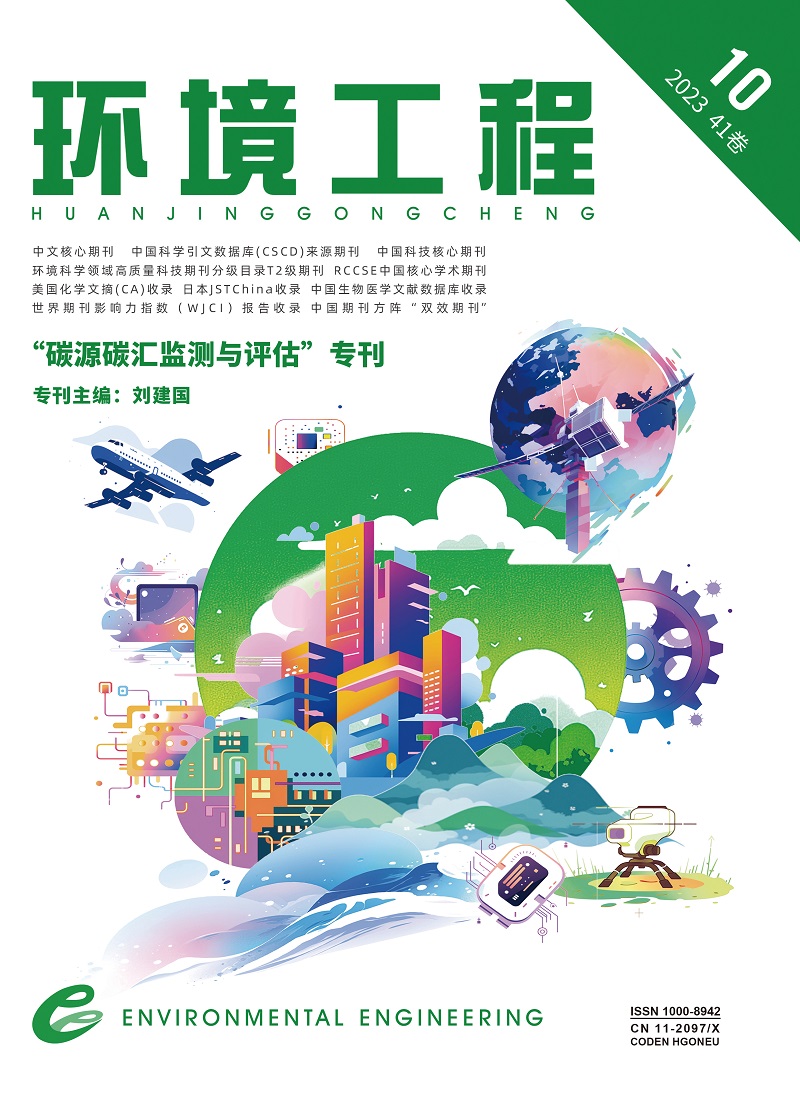| [1] |
康欢倩, 傅雪罡, 王林, 等.不同经营水平下江西森林碳汇贡献力预测分析[J].南方林业科学, 2022, 50(6):45-49.
|
| [2] |
匡丹, 邓强.践行"绿水青山就是金山银山" 推进高质量跨越式发展研究:以江西省为例[J].中共南昌市委党校学报, 2020, 18(4):61-65.
|
| [3] |
马回, 王露瑶, 赵琨婷.江西生态环境保护与治理的实践探索与启示[J].海峡科技与产业, 2021, 34(7):8-10.
|
| [4] |
黄卉.基于InVEST模型的土地利用变化与碳储量研究[D].北京:中国地质大学, 2015.
|
| [5] |
周涛, 史培军.土地利用变化对中国土壤碳储量变化的间接影响[J].地球科学进展, 2006, 21(2):138-143.
|
| [6] |
揣小伟, 黄贤金, 郑泽庆, 等.江苏省土地利用变化对陆地生态系统碳储量的影响[J].资源科学, 2011, 33(10):1932-1939.
|
| [7] |
程鹏飞, 王金亮, 王雪梅, 等.森林生态系统碳储量估算方法研究进展[J].林业调查规划, 2009, 34(6):39-45.
|
| [8] |
孙清芳, 贾立明, 刘玉龙, 等.中国森林植被与土壤碳储量估算研究进展[J].环境化学, 2016, 35(8):1741-1744.
|
| [9] |
卢雅焱, 徐晓亮, 李基才, 等.基于InVEST模型的新疆天山碳储量时空演变研究[J].干旱区研究, 2022, 39(6):1896-1906.
|
| [10] |
如克亚·热合曼, 阿里木江·卡斯木, 希丽娜依·多来提, 等.天山北坡城市群碳储量时空变化及预测研究[J].中国环境科学, 2022, 42(12):5905-5917.
|
| [11] |
韩玉, 丁素婷, 杨太保.山西南部中条山生态系统碳储量时空分布及驱动因素[J].中国环境科学, 2023, 43(3):1298-1306.
|
| [12] |
韩艳莉, 陈克龙, 于德永.土地利用变化对青海湖流域生境质量的影响[J].生态环境学报, 2019, 28(10):2035-2044.
|
| [13] |
王耕, 王佳雯.丹东沿海地区土地利用变化对生境质量的影响研究[J].生态环境学报, 2021, 30(3):621-630.
|
| [14] |
张徐, 李云霞, 吕春娟, 等.基于InVEST模型的生态系统服务功能应用研究进展[J].生态科学, 2022, 41(1):237-242.
|
| [15] |
LIANG X, GUAN Q F, CLARKE K C, et al.Understanding the drivers of sustainable land expansion using a patch-generating land use simulation (PLUS) model:a case study in Wuhan, China[J].Computers, Environment and Urban Systems, 2021, 85:101569.
|
| [16] |
谢向东, 林孝松, 王莹, 等.基于PLUS模型的重庆市南川区土地利用多情景模拟[J].长江科学院院报, 2023, 40(6):86-92.
|
| [17] |
冀泳帆, 贾鲁净, 杨联安, 等.耦合InVEST-PLUS模型的榆林市生境质量时空演变及预测分析[J].水土保持学报, 2023, 37(1):123-132.
|
| [18] |
林彤, 杨木壮, 吴大放, 等.基于InVEST-PLUS模型的碳储量空间关联性及预测:以广东省为例[J].中国环境科学, 2022, 42(10):4827-4839.
|
| [19] |
卫泽柱, 董斌, 许海锋, 等.鄱阳湖地区典型湿地碳储量时空演变与情景预测[J].水土保持通报, 2023, 43(3):1-11.
|
| [20] |
查印水, 汤序军, 吴建勋, 等.基于土壤类型法的鄱阳湖生态经济区土壤碳密度和碳储量评估[J].江西科学, 2020, 38(4):541-545.
|
| [21] |
纪昌品, 张晓平.鄱阳湖不同湿地植物群落光合碳储量及分配[J].水土保持研究, 2022, 29(3):121-127.
|
| [22] |
徐坚, 李国忠, 郑航, 等.基于遥感的鄱阳湖五河滨岸带生态功能分区研究[J].长江科学院院报, 2022, 39(7):154-162.
|
| [23] |
谢花林, 邹金浪, 彭小琳.基于能值的鄱阳湖生态经济区耕地利用集约度时空差异分析[J].地理学报, 2012, 67(7):889-902.
|
| [24] |
黄兰贵, 殷环环, 张航, 等.鄱阳湖出口浮游植物群落与环境因子分析[J].水利水电快报, 2021, 42(8):77-82.
|
| [25] |
孙欣欣, 薛建辉, 董丽娜.基于PLUS模型和InVEST模型的南京市生态系统碳储量时空变化与预测[J].生态与农村环境学报, 2023, 39(1):41-51.
|
| [26] |
郑航, 肖潇, 程学军, 等.基于PLUS与InVEST模型的鄱阳湖流域碳储时空动态研究[C]//2022中国水利学术大会(中国水利学会2022学术年会), 北京, 2022.
|
| [27] |
ZHOU Y, LI X, LIU Y.Land use change and driving factors in rural China during the period 1995-2015[J].Land Use Policy, 2020, 99:105048.
|
| [28] |
刘丹丹.基于InVEST模型江西省土地利用变化的生态效应研究[D].南昌:江西师范大学, 2021.
|
| [29] |
温玉玲, 李红波, 张小林, 等.近30年来鄱阳湖环湖区土地利用与景观格局变化研究[J].环境科学学报, 2022, 42(7):501-510.
|
| [30] |
高薇.江西省土地利用变化和人类活动强度关系研究[D].南昌:东华理工大学, 2021.
|
| [31] |
林一诚, 郑景明, 周怡宁, 等.基于InVEST模型的围场县小滦河流域碳储量空间分布及热点区域分析[J].生态学杂志, 1-11.
|
| [32] |
尚俊, 蔡海生, 龙月, 等.基于InVEST模型的鄱阳湖区生境质量时空演化及其变迁特征分析[J].长江流域资源与环境, 2021, 30(8):1901-1915.
|
| [33] |
车育婧.鄱阳湖生态经济区土地利用变化及其生态系统服务价值估算[D].南昌:江西师范大学, 2018.
|
| [34] |
卓成刚, 刘秀慧.江西省土地利用变化特征及驱动力分析[J].中国国土资源经济, 2016, 29(11):68-72
, 33.
|


 Login
Login Register
Register E-alert
E-alert






 DownLoad:
DownLoad: